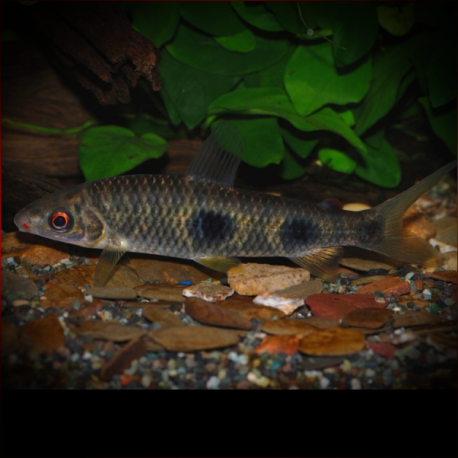More info
Datasheet
| Minimum Tank Size | 540 litres / 142.65 US gallons |
| Maximum Size | 20.0cm / 7.87inches |
| Temperature | 20°C / 68.00°F - 28°C / 82.40°F |
| Hardness | 2.02dgH / 36ppm - 12.05dgH / 215ppm |
| pH | 6.0-7.5 |
General Description
Leporinus Copelandii, a member of the Anostomidae family, is a diverse genus within the Characiformes order, with approximately 90 valid species. They are known as 'headstanders' due to their tendency to swim at an oblique 'head-down' angle. The species typically has an elongate and somewhat rounded body shape, although variations exist.
Aquarium Setup
For Leporinus Copelandii, a tank size of at least 540 litres is recommended. A sandy substrate with leaf litter, large driftwood branches, twisted roots, and floating vegetation can be included in the setup. Water quality must be closely monitored, and an adequately oxygenated environment is crucial. Additionally, a secure lid is essential to prevent these fish from jumping out.
Behaviour
Leporinus Copelandii exhibit unique behavior by swimming at an oblique 'head-down' angle. They are known to be active swimmers and may require plenty of open space to move freely in the aquarium. These fish should be kept in groups to reduce stress and exhibit their natural behaviors more comfortably.
Feeding and Diet
In their natural habitat, Leporinus species, including L. Copelandii, are predominantly benthic omnivores, feeding on algae, invertebrates, and organic detritus. When kept in an aquarium, they are not picky eaters and will accept a variety of foods. However, high-protein diets should be avoided for their optimal health.
Reproduction & Dimorphism
Information on the reproduction of Leporinus Copelandii is unrecorded. Typically, in characiform species, males and females may display differences in coloration, fin shapes, or body size during the reproductive period. Further studies are needed to understand the specific reproductive behaviors and dimorphic features of this species.
Habitat and Distribution
The type locality of Leporinus Copelandii includes regions within the Paraíba do Sul and Doce river systems in southeastern Brazil. They are native to tropical and subtropical South America, ranging from northwestern Colombia to central Argentina. These fish prefer well-oxygenated waters with suitable hiding spots and moderate water flow in their natural habitat.

